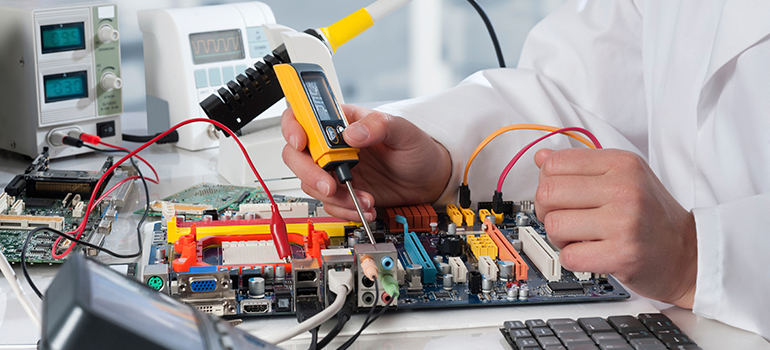5G Loss Measurement

Assessments for Compatible Accessories
06 July 2021
5G allows for unparalleled cellular connectivity and speed. One reason is the use of higher frequencies, where there are larger chunks of contiguous spectrum available to provide wider bandwidth and greater throughput. 3GPP, the cellular standards organization, designates this high frequency range from 24 to 44 GHz as FR2, "Frequency Range 2". As mmWave technology improves and the regulatory framework takes shape, more cellular OEMs are providing FR2 capability. However, there are technical limitations that can limit a 5G device's performance in the FR2 frequency range. These include line of sight, orientation, and path loss.
With the proliferation of new 5G devices comes a wave of 5G-compatible accessories. Historically, accessories were deemed to have an insignificant effect on cellular performance. However, the movement into higher frequency ranges using mmWave technology has brought renewed interest from accessory manufacturers OEMs as to the impact of their products on 5G devices. Material properties, construction, geometry, and shorter wavelengths play a much bigger role in accessory performance at higher frequencies. Cellular signals are more easily attenuated, reflected, or scattered, which reduces cellular performance and negatively impacts the user's experience. Every decibel of loss amounts to a 10% reduction in useable range. Existing solutions to assess accessories are complex, time-consuming, and costly.
For example, an existing solution for cell phone case manufacturers is to compare the over-the-air radiated power from a compatible cell phone with the case on versus with the case off. At mmWave frequencies, however, the radiated emissions are highly directional, with many peaks and nulls in the radiation pattern. These measurements have to be performed in specially constructed chambers, and use complicated base station simulators and antenna setups. This leads to increased time, cost, and complexity in performing the measurements. There is a high barrier of entry for accessory OEMs who do not have access to facilities or equipment to perform these measurements.
Another traditional method for assessing accessories is simulation. A model of the accessory is created in CAD software and electromagnetic simulations performed. This requires expensive software licenses, CAD and simulation knowledge, and correlation to actual measurements, which is often difficult and prone to errors. Simulations require accurate knowledge of the material properties in the frequency range of interest, and complex geometries lead to increased computation time. Manufacturing variations can lead to differences in actual measurements, limiting the usefulness of simulation-only solutions.
One final method to assess material performance is to place a precisely constructed sample in a waveguide or resonant cavity and perform measurements of its dielectric properties. manufacturers can then calculate the expected performance of the accessory when formed to its final shape. This procedure is only applicable to materials that can be cast or milled to the appropriate size and geometry, excluding softline materials entirely. Things like surface patterns or mixed material construction are not addressed by this method, limiting its usefulness.
Intertek has developed a patent-pending measurement solution using collinear spot-focusing horn antennas to measure the performance of 5G accessories in free space. At the Wireless Center of Excellence in Lexington, Kentucky, engineers measure the loss, reflection, scattering, and dielectric properties of accessories in 5G FR2 frequency bands from 24 GHz to 40 GHz. The unique Eravant spot-focusing horn antennas eliminate the need for specialized measurement chambers. The test signal can be precisely placed on the accessory to achieve unparalleled measurement accuracy. A signal generator paired with a spectrum analyzer, scalar network analyzer, or vector network analyzer is used to provide varying levels of performance data. Accessory manufacturers now have the flexibility to provide the most relevant data, at a fraction of the time and cost of traditional methods.
This performance data and reports create a unique and compelling user experience story which help accessory manufacturers stand out in a crowded field. A case that shows minimal impact to 5G signals has a distinct selling point, and an advantage over other manufacturers. You can choose exactly which measurements to perform, lowering the barrier of entry for smaller manufacturers. The marketing value of performance data is reflected through increased sales, brand recognition, and overall customer satisfaction.

Brian Lackey,
Engineer
Brian Lackey is an EMC engineer and member of technical staff at Intertek in Lexington, Kentucky. He previously worked as a silicon validation engineer at Texas Instruments. He graduated magna cum laude with a degree in electrical engineering from Rose-Hulman Institute of Technology. He is a member of the TCB Council, an organization responsible for directly interfacing with the FCC, and is developing standards with the IEEE for statistical process control.


